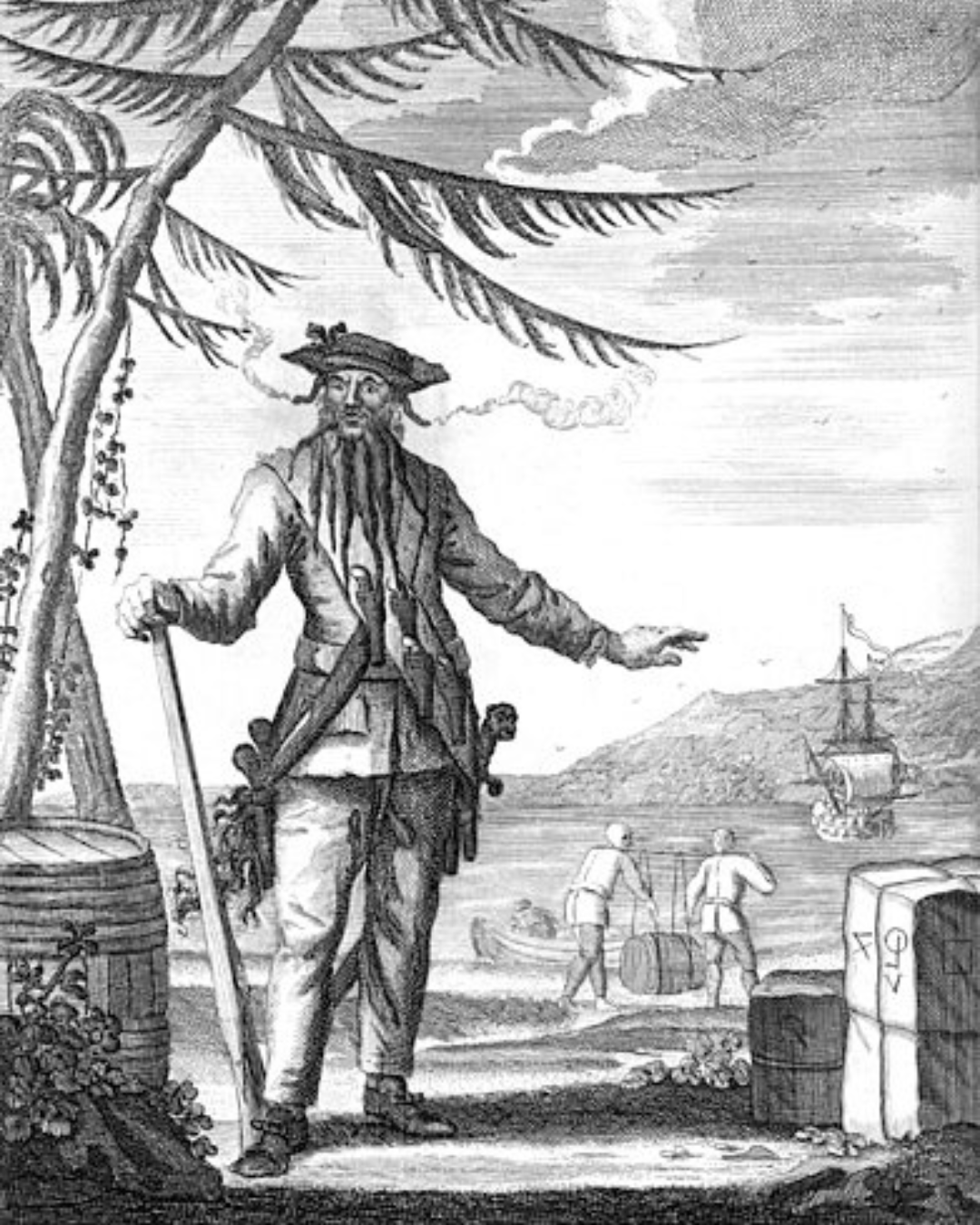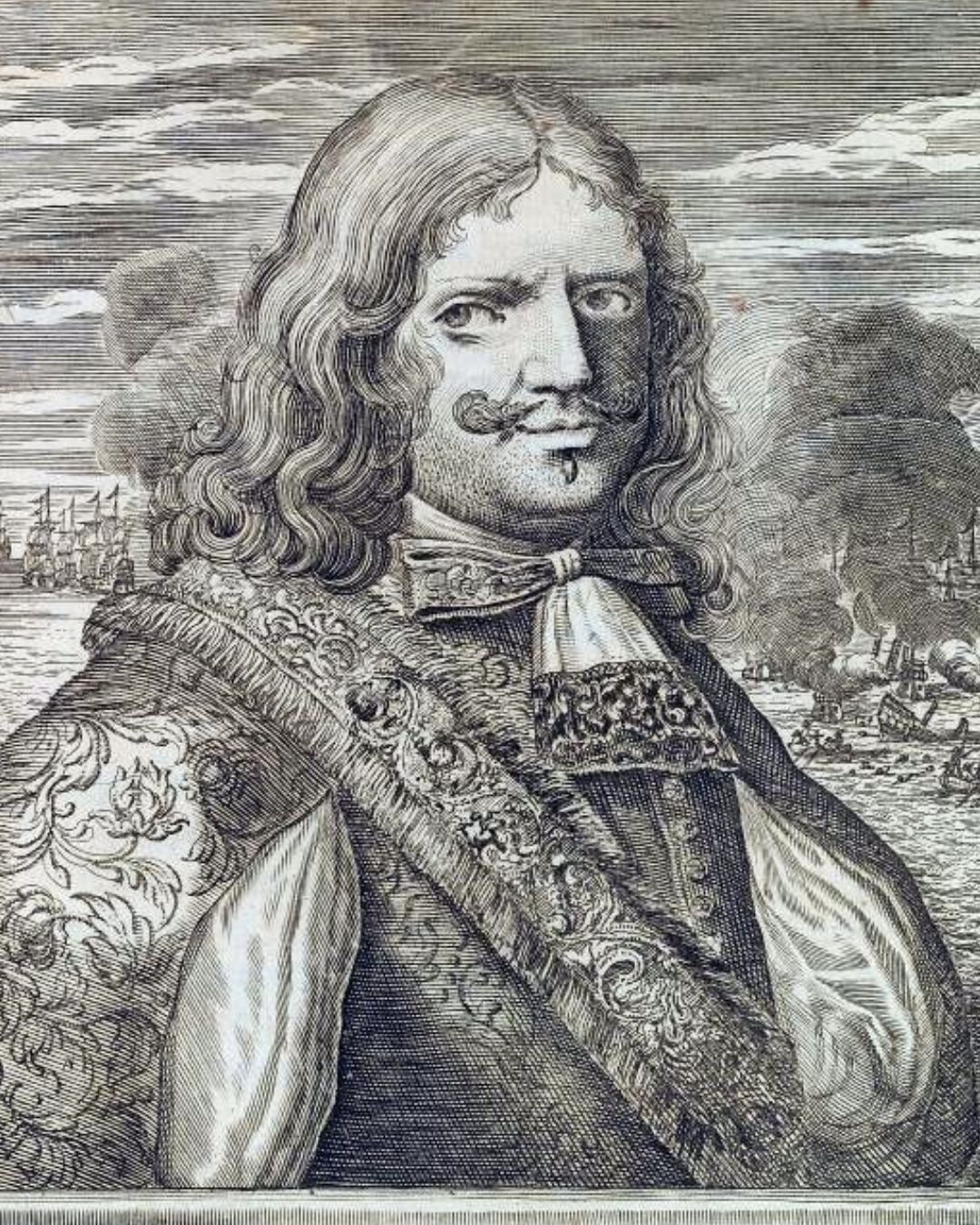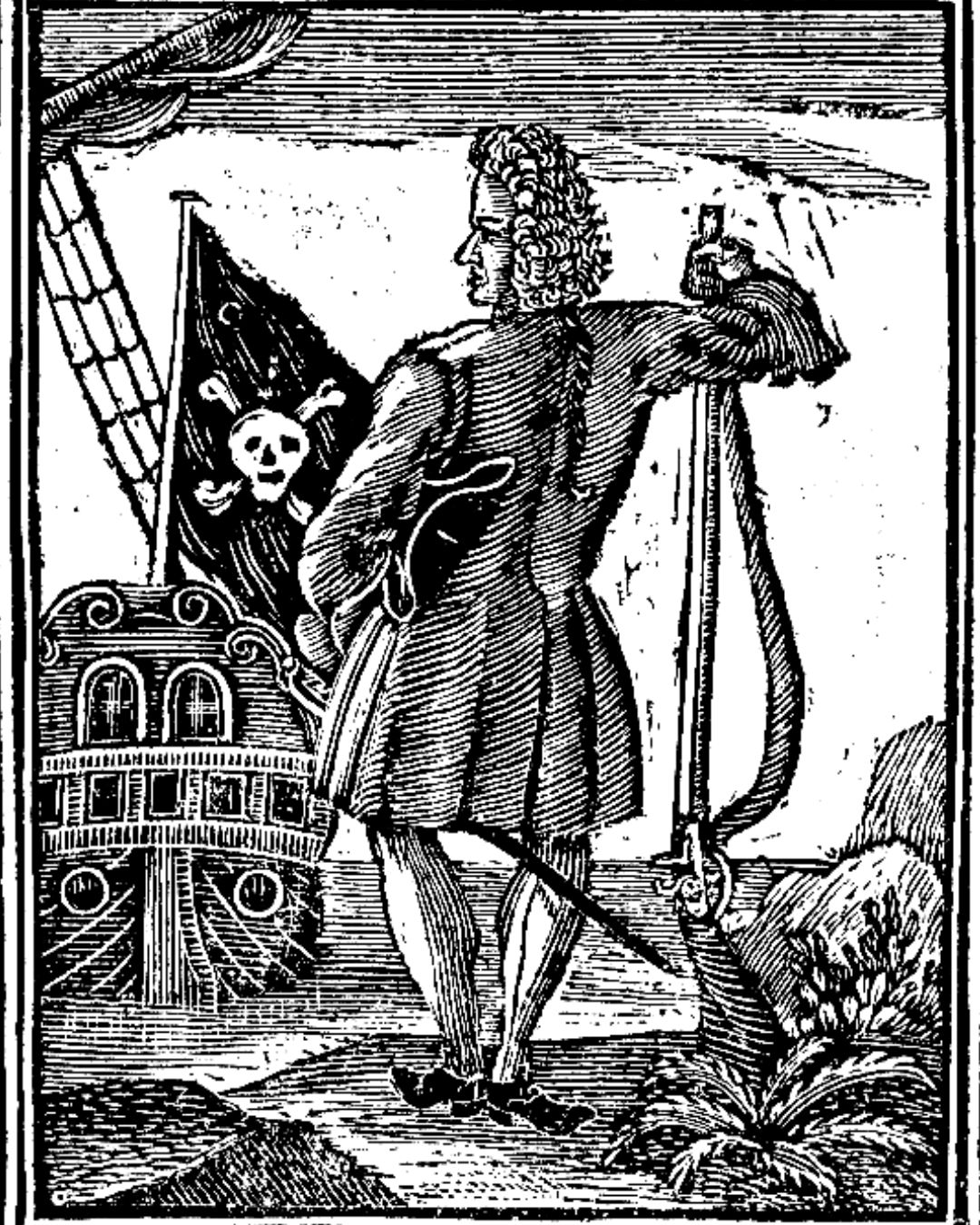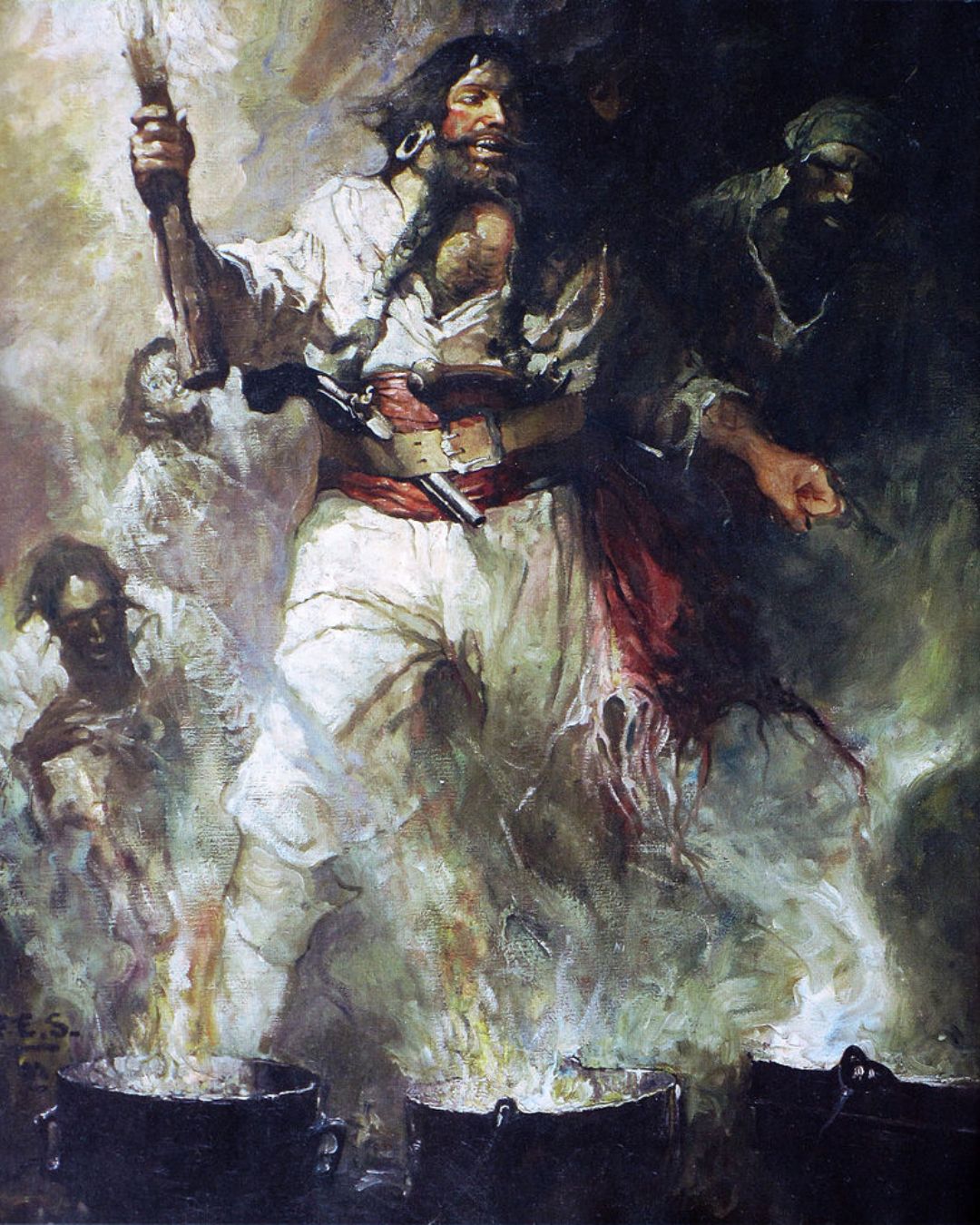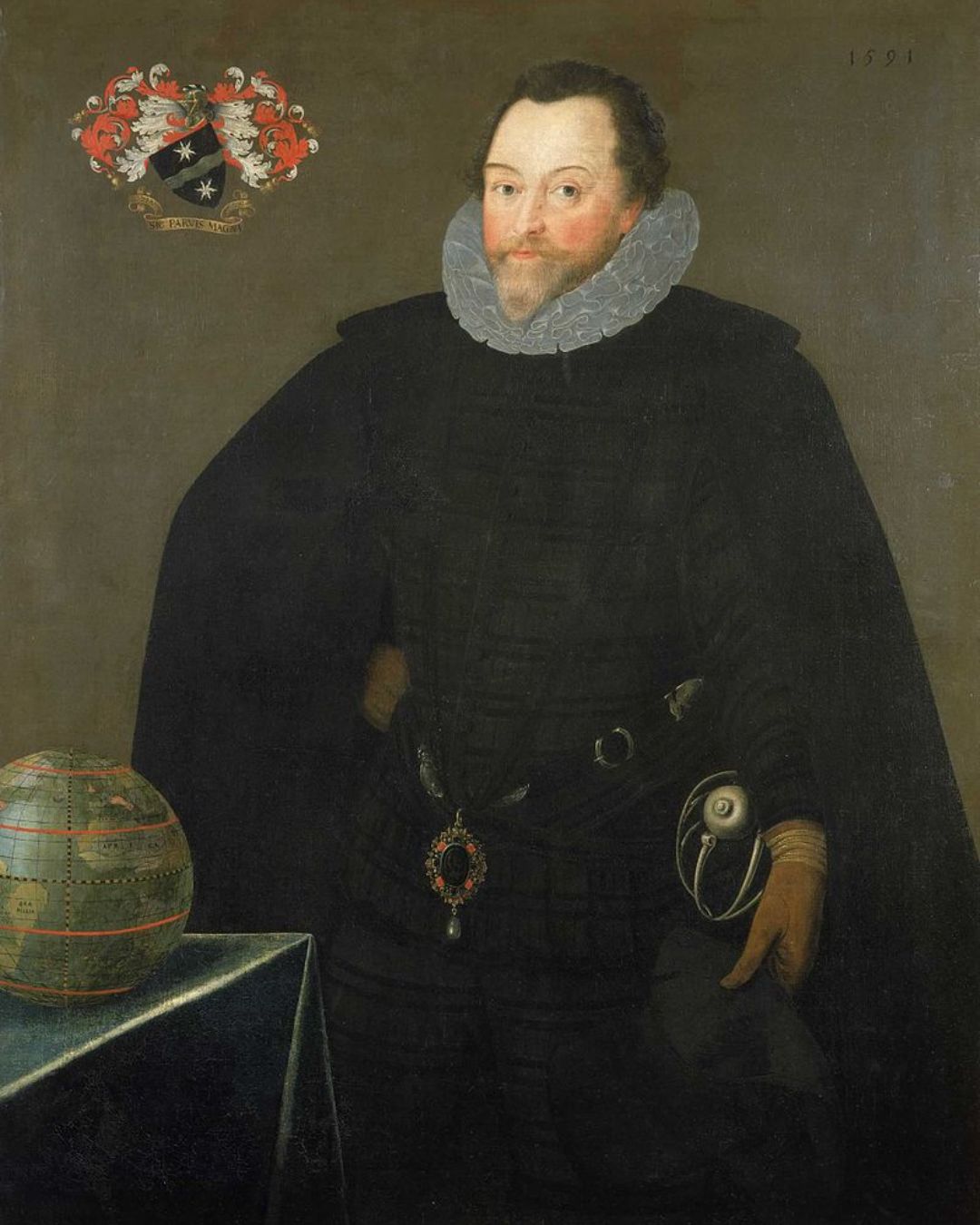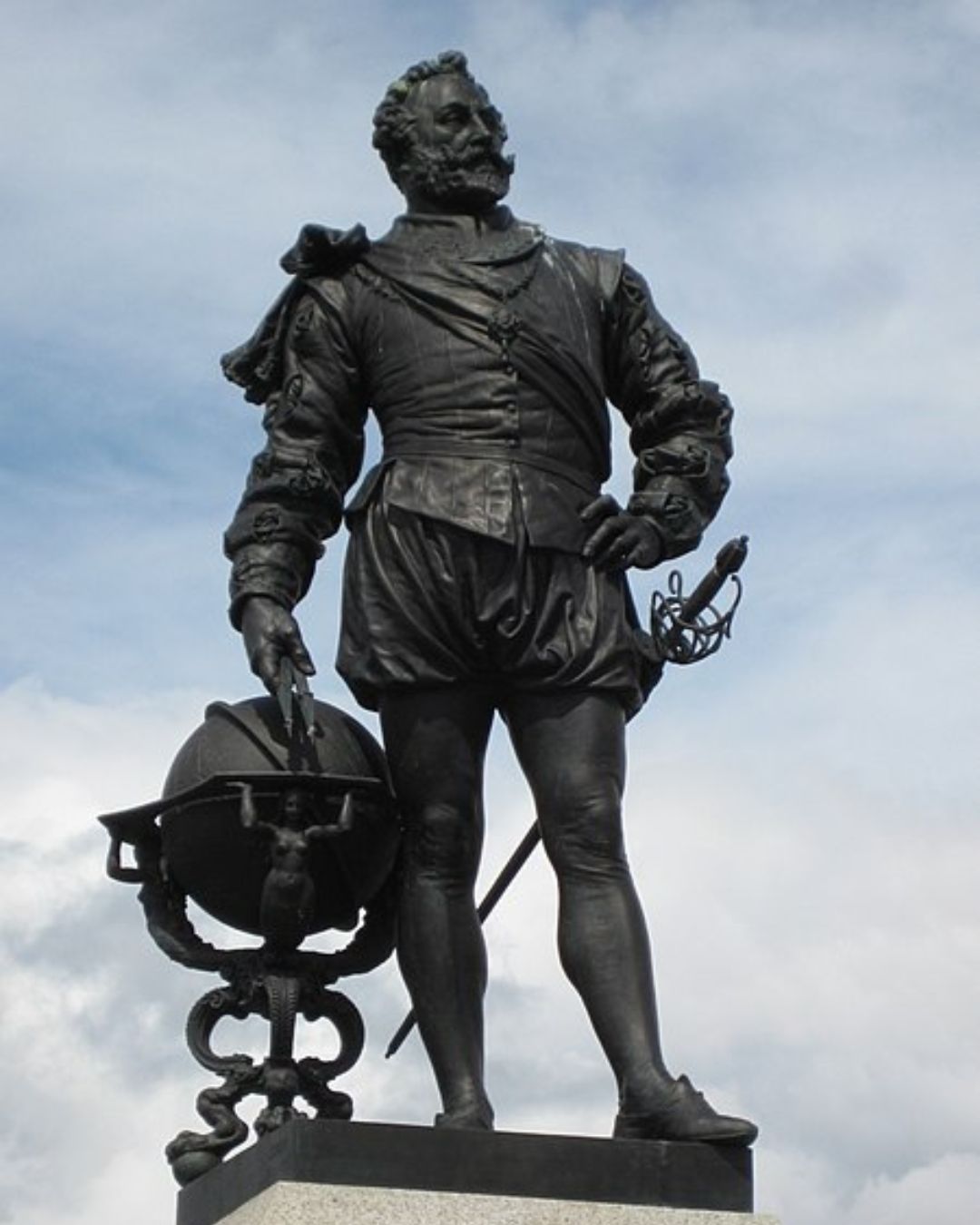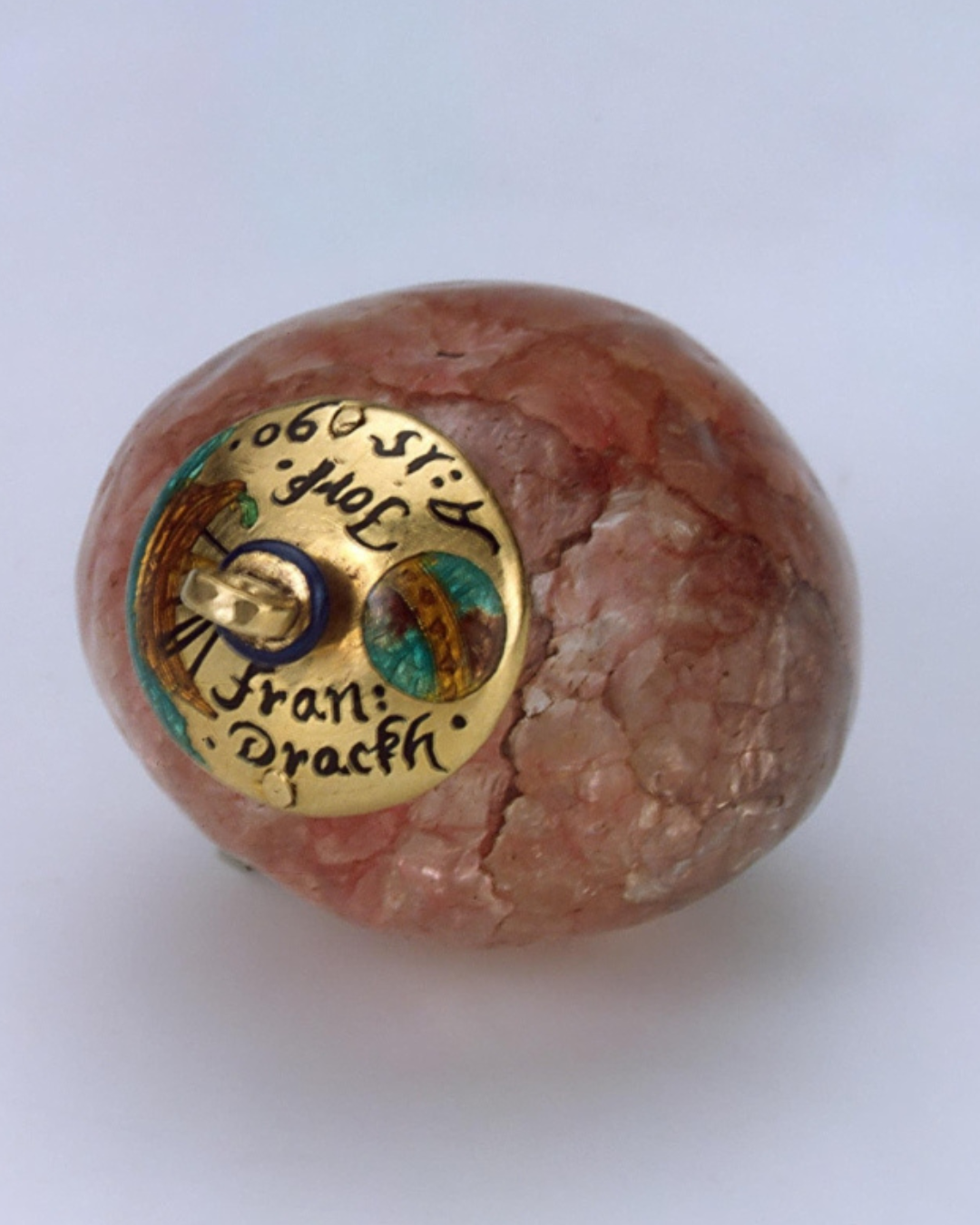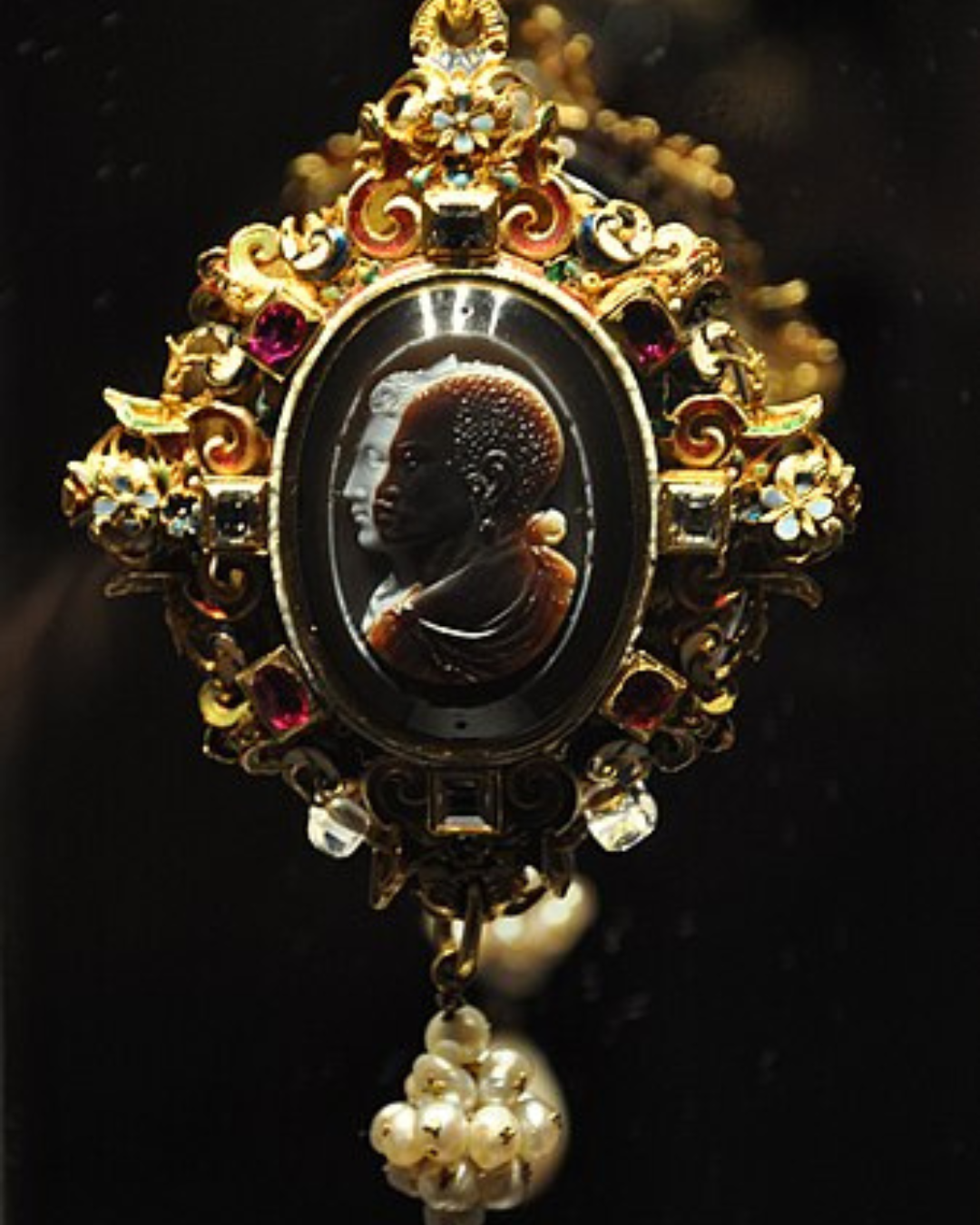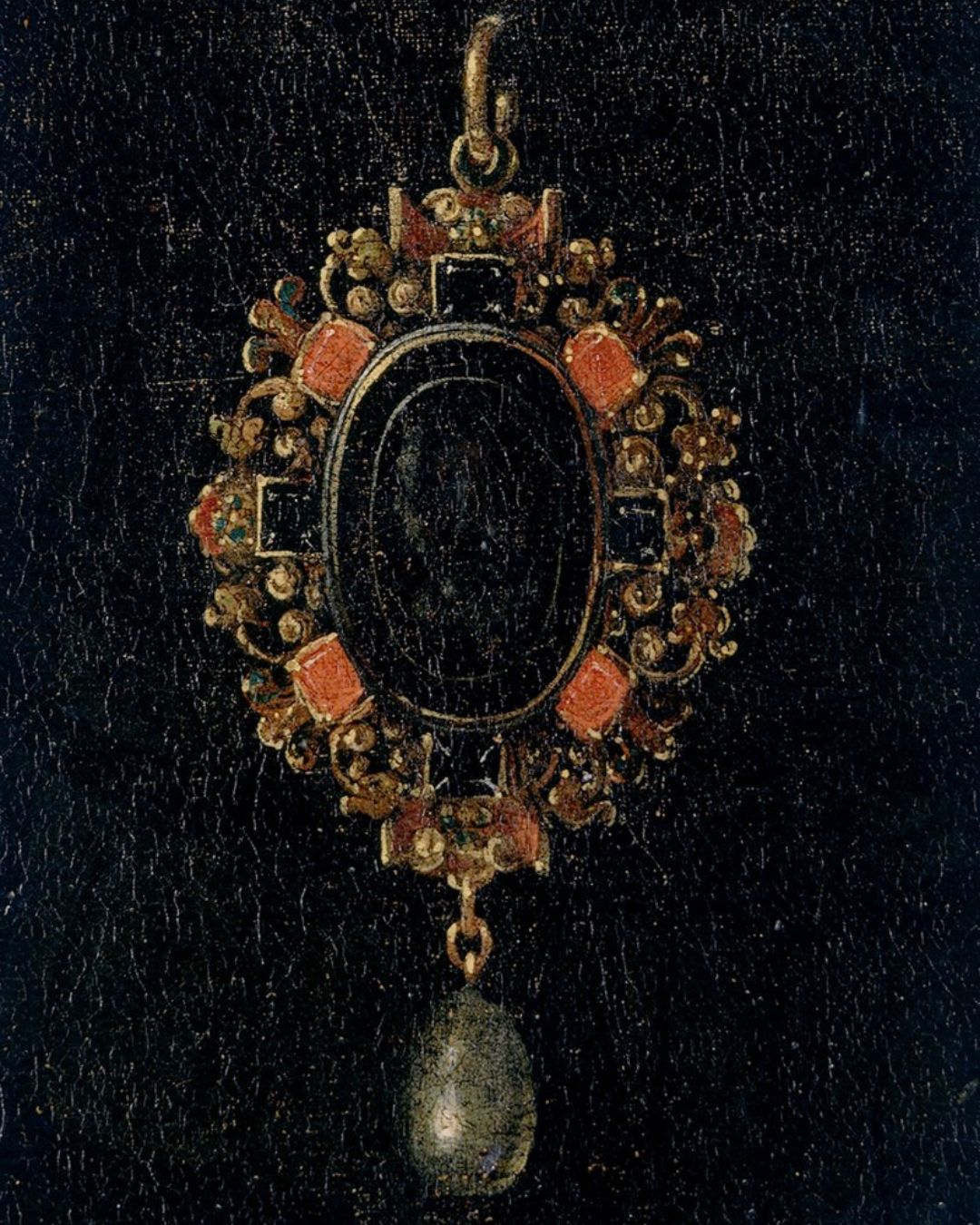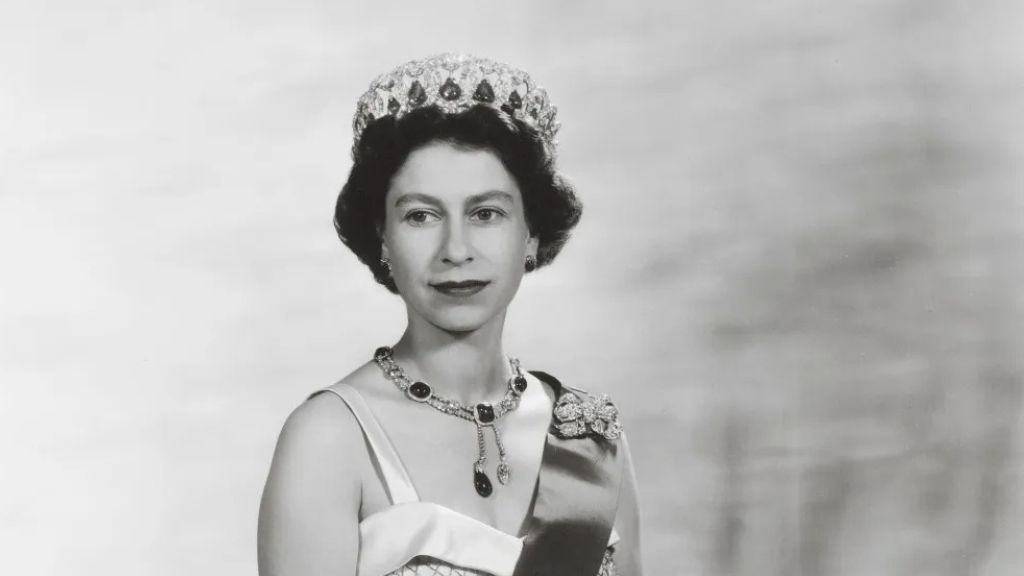
The great and terrible English pirates: the romanticised image of sea wolves
The tricorn hat, eye patch, and bottle of rum — the iconic image of a pirate captures the hearts of ladies and sparks envy in gentlemen. However, in England, pirates are not just associated with the romance of freedom; they command respect. Afisha.London has prepared a captivating article about famous sea devils — Henry Morgan, Blackbeard, Stede Bonnet, and the legal pirate Sir Francis Drake, whose legendary pendant is kept in St. Petersburg’s Hermitage. You will also find a selection of pirate-themed books by modern authors that will transport you to the pirate world of the past.
Pirates — unscrupulous criminals and plunderers of the state treasury — how did the romantic image of the rogue, known to us from films and books, come about? As it turns out, it’s not that simple. Old-timers in England can tell many tales about pirates who sailed the seas in the interests of the British Crown. Over time, the “gentlemen of fortune” ceased to be feared and instead were romanticised.
The first ballad dedicated to pirates was the publication of “A General History of the Robberies and Murders of the Most Notorious Pyrates,” published in London in 1724. This book is attributed to writer Daniel Defoe, and from there, stories of noble pirates began to flood in — from Rafael Sabatini’s “Captain Blood” to Walter Scott’s “The Pirate” and Robert Stevenson’s “Treasure Island.” Let’s delve into who pirates really were and why they continue to fascinate and even inspire awe.
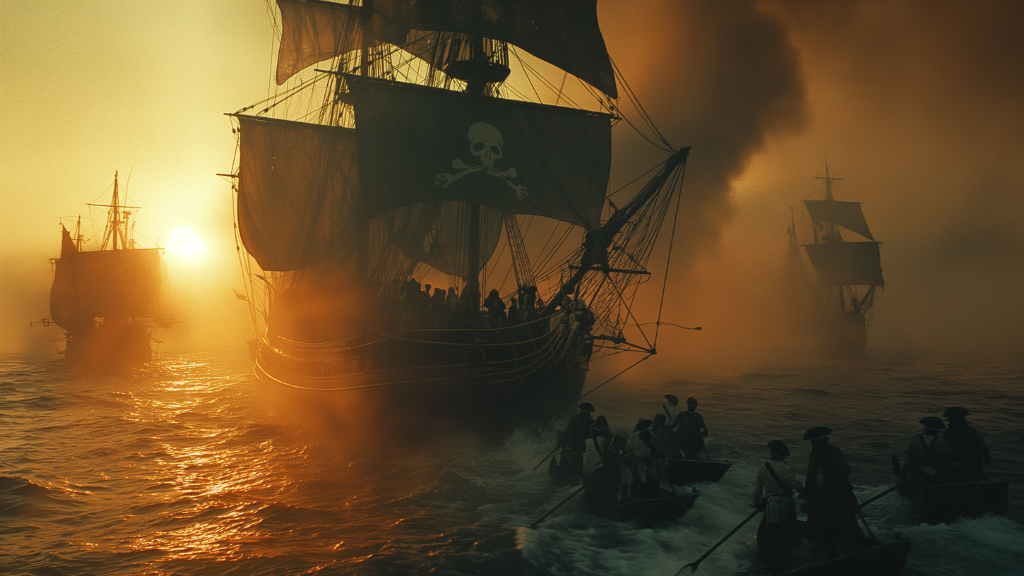
Photo: Afisha.London / Midjourney
The Golden Age of Piracy
The first edition of “A General History…” was published in the spring of 1724 and went on sale at Charles Rivington’s bookstore near St. Paul’s Cathedral in London. This modestly designed book was adorned with engravings of the most notorious pirates — Blackbeard and Bartholomew Roberts. The author was listed as one Charles Johnson, but many experts believe the book was actually written by Daniel Defoe, known for “Robinson Crusoe.” Defoe travelled extensively and even witnessed the famous Great Storm of 1703 in southern England.
Invalid slider ID or alias.
In “A General History…,” the writer captured his adventurous spirit, detailing the stories of 17 of the most famous pirates. Later, experts compared these biographies with real documents and ship logs from the archives of the Colonial Office and the Public Record Office in Britain, amazed by their remarkable accuracy. The book was a huge success, kick-starting the very concept of piracy with its essential attributes: a black eye patch, tricorn or bandana, buried treasures, and the fearsome black pirate flag “Jolly Roger.”
- Captain Bartholomew Roberts. Photo: Engraved by Benjamin Cole[2] (1695–1766), Public domain, via Wikimedia Commons
- Edward Teach also known as Blackbeard. Photo: Joseph Nicholls (fl. 1726–55), Public domain, via Wikimedia Commons
The Golden Age of Piracy, described in most pirate books, spans from 1650 to 1730. This period coincides with the colonisation of new lands and the opening of new sea routes — England and France, as maritime powers, challenged Spain’s dominance in America. The era of the most formidable pirate, Henry Morgan, began with the English capture of Spanish Jamaica in 1655.
Born in 1635 in Cardiff, Wales, to a wealthy landowner, Morgan’s refusal to continue his father’s business led him to a port where he joined a ship bound for Barbados. Upon arrival, as was customary for indentured servants, he was sold into slavery. Somehow, he paid off his contract and even amassed a fortune. In 1667, he bought a ship with a privateer’s commission, allowing him to merrily and freely plunder Spanish ships. Privateer commissions, issued by governors in the king’s name, authorised private vessels to attack and capture ships of enemy states. Privateers were respected and esteemed individuals — after all, they defended the honour of the Crown!
- Henry Morgan. Photo: Alexandre Exquemelin, Piratas de la America (1681), Public domain, via Wikimedia Commons
- Admiral Sir Henry Morgan, Lieutenant Governor of Jamaica. Photo: Manner of Peter Lely, Public domain, via Wikimedia Commons
Morgan’s daring bordered on recklessness — he launched bold attacks on Cuba and Maracaibo, and in 1671 spectacularly sacked Panama, earning the nickname Bloody Henry. His raid on the wealthy city of Maracaibo inspired a chapter in Rafael Sabatini’s novel “Captain Blood,” although the book’s hero, Peter Blood, is a composite character based on several real-life figures, including Henry Morgan.
Read also: Felix Yusupov and Princess Irina of Russia: Love, Riches and Emigration
Later, Morgan was appointed Lieutenant Governor of Jamaica, and for his services to the nation, King Charles II knighted him. Sir Henry became very popular in his homeland, mingled with the upper circles of the New World, but was removed from his post in 1682 for habitual drunkenness. He spent another six years in debauchery and drinking before dying in 1688. Strangely, Morgan, buried with honours in a Jamaican church, did not find earthly peace — in 1692, a massive wave washed away the cemetery and palace where the famous pirate had lived, taking his grave and all that reminded of him into the ocean.
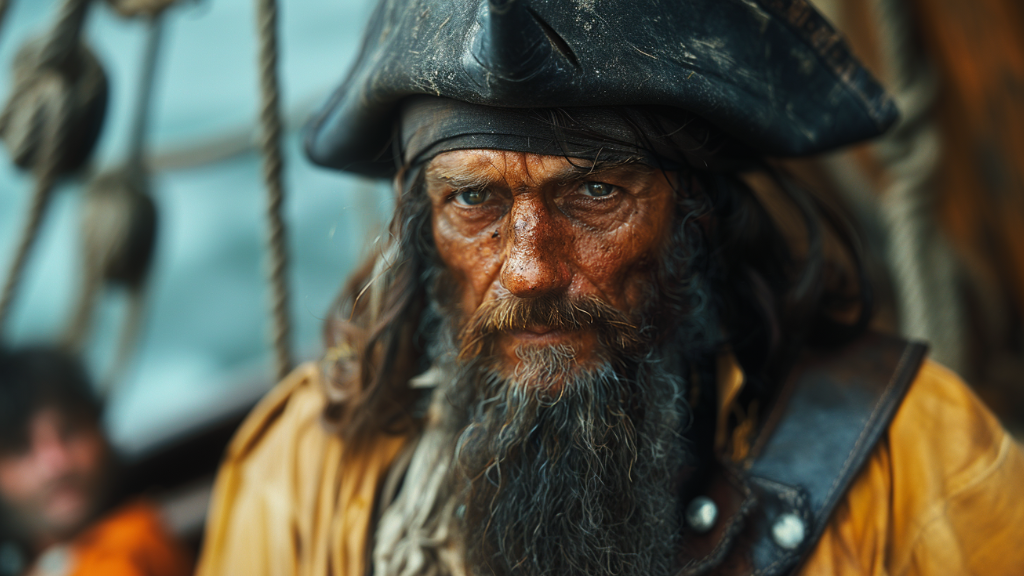
Photo: Afisha.London / Midjourney
Blackbeard and the Gentleman Pirate Stede Bonnet
The Gentleman Pirate refers to the nobleman Stede Bonnet — his story, like that of Blackbeard, is detailed in “A General History…”. Born in 1688 into a distinguished family of English plantation owners on Barbados, Bonnet studied law and was considered an educated and respectable man. After his father’s death, he inherited the family estate, received the rank of major, and married — most unfortunately, but fatefully.
Driven to despair by his nagging wife, Bonnet hastily bought a ship, named it “Revenge,” and set out to plunder ships. His piracy was not very successful, and he was severely wounded in a skirmish with a Spanish ship near the Bahamas. The world might never have heard of the unfortunate Captain Stede Bonnet if not for his encounter with the legendary Edward Teach, known as Blackbeard. Bonnet ceded his ship to Teach, and they became partners —their joint piracy brought them good loot and wealth.
- Stede Bonnet. Photo: Charles Johnson, Public domain, via Wikimedia Commons
- “Blackbeard in Smoke and Flames”, Frank Schoonover, 1922. Photo: Frank E. Schoonover (1877-1972), Public domain, via Wikimedia Commons
It’s worth mentioning why the name Blackbeard struck fear and terror throughout the West Indies. Edward Teach, a native of Bristol, started as a sailor on a privateer and rose to become a renowned captain. He gathered a powerful fleet and formed a pirate alliance. Legends abound that Teach dealt with his enemies with particular brutality, but there is no evidence of this. Contemporary accounts suggest that Blackbeard was, on the contrary, a calculating and astute pirate — he avoided violence and paralysed his foes with his fearsome appearance and powerful fleet. He earned his nickname from his thick black beard, which he lovingly groomed and braided.
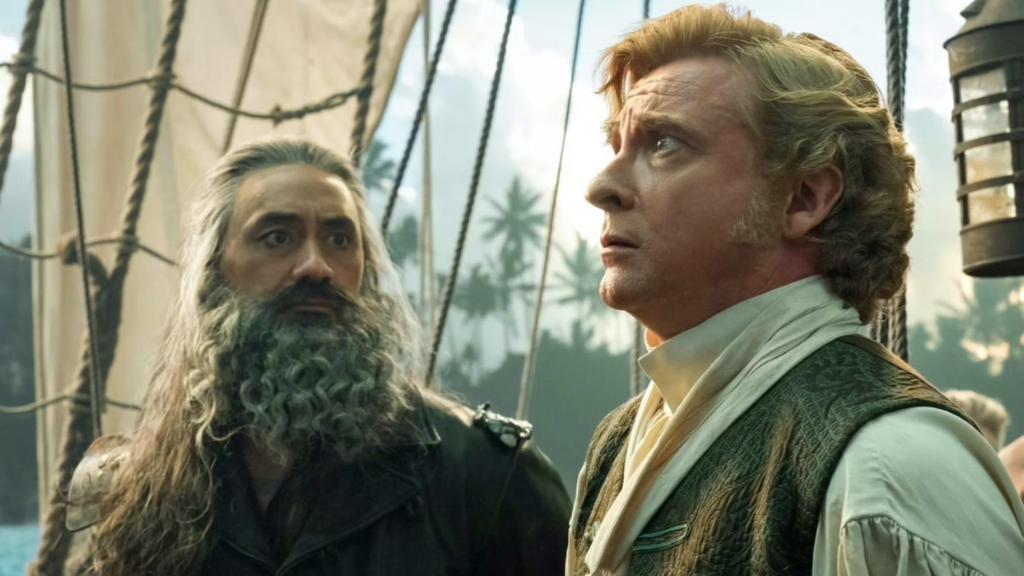
A still from Our Flag Means Death. Featuring Taika Waititi as Blackbeard and Rhys Darby as Steed Bonnet. Photo: HBO Max, 2022.
However, while pirate Henry Morgan plundered with royal consent, Bonnet and Teach pirated in disgrace, and their partnership ended when vast treasures were at stake. Blackbeard emptied the gold- and weapon-laden holds of the ship and left Bonnet high and dry while the latter sought royal pardon for himself and Teach from the governor of North Carolina. After his pardon, Stede continued his piracy and was captured and executed in Charleston in the autumn of 1718. That same autumn, Blackbeard also fell.
Pardoned by the king, he continued raiding ships and had a falling out over loot with the state governor. The crushing defeat of Blackbeard was achieved by British Royal Navy Lieutenant Robert Maynard, who was promoted to captain for his heroism. Maynard lured Teach onto his ship, fought him, decapitated the pirate, and mounted his head on a stake in Virginia’s harbour to deter other criminals. In honour of this victory, the Royal Navy of Virginia and Britain celebrates annually on November 22nd.
Her Majesty’s Faithful Servant Francis Drake
Francis Drake is known as the most respected legal English pirate, remembered not only in England but also in Russia. Born in 1540 in Tavistock, Devon, he began working for his slaver cousin as a youth. Together, they attacked slave ships and villages in West Africa, selling the captives to Spanish planters. This entrepreneurship irked Spain, and one day, a Spanish fleet ambushed Drake and decimated his small fleet.
Read also: Boris Anrep in London: A Don Juan and the Love of Anna Akhmatova
Francis survived, but from then on, Spaniards became his sworn enemies. Drake raided Spanish ships so fiercely and savagely, often without a privateer’s commission, that he earned the nickname El Draque — the Dragon. King Philip II of Spain, in fury, put a staggering bounty of 20,000 ducats on his head, equivalent to about £6 million in today’s money.
- Portrait of Francis Drake by Marcus Gheeraerts the Younger, 1591 Photo: Marcus Gheeraerts the Younger, Public domain, via Wikimedia Commons
- Statue of Francis Drake in Plymouth, England. Photo: Statue of Sir Francis Drake by Philip Halling, CC BY-SA 2.0, via Wikimedia Commons
Drake’s global fame came from his circumnavigation, the second after Magellan’s, which was actually a pirate expedition under secret orders from Queen Elizabeth I. Francis invaded the Pacific, then controlled by the Spaniards, raiding towns and ships along the coasts of North and South America. He named the territory now known as California New Albion under Elizabeth I’s sovereignty, sparking a prolonged Anglo-Spanish conflict in the New World.
Read also: Tate Modern opens its doors to “Expressionists: Kandinsky, Münter and the Blue Rider”
Drake returned to England with more silver and gold than the treasury’s two-year revenue. In 1581, aboard his legendary galleon “Golden Hind,” the queen knighted him. Overnight, the pirate became the owner of a lavish estate and vice-admiral of the British fleet, but he soon returned to raiding Spanish ships. Francis died as a true sea wolf, at sea — in 1596, during a massive raid on the port of Panama, he contracted dysentery and perished.
Drake’s Magical Amulets in London and St. Petersburg
Drake’s phenomenal luck baffled his contemporaries — the Spaniards believed he sold his soul to the devil for maritime success, while superstitious sailors thought his invincibility lay in his jewellery. The suspicion fell on a sardonyx pendant adorned with pearls and rubies, gifted to the pirate by the queen in gratitude for his expedition. Drake’s descendants donated the jewel to the Victoria and Albert Museum in London, where it remains to this day.
- The Drake Jewel, a pendant from the V&A, 1580-1590 Photo: © Victoria and Albert Museum, London, 2023
- Francis Drake’s pendant (1590s) from the Hermitage. Photo: © 1998-2024 State Hermitage Museum
However, Drake had another amulet, surrounded by genuine mystical fame — a piece of Incan rose quartz, which became a bone of contention for many politicians and kings. Seized in a sun temple by conquistador Francisco Pizarro, the talisman passed to Mary, Queen of Scots, and Elizabeth I, who gave it to Drake. It was said that using this stone, the pirate summoned a two-week storm and defeated the Spanish Armada.
Read also: Antonio Canova’s ‘Three Graces’: Crafting a Neoclassical Masterpiece
The story then takes a fantastical turn — Drake’s amulet was stolen by Ivan the Terrible’s privateer Karsten Rode, whose death led the talisman to False Dmitry I and then into the Russian imperial treasury. Catherine the Great found it and wore it as a brooch. In 1807, Drake’s wonder-stone was placed in the Hermitage’s treasury in St. Petersburg, but according to legend, in 1920, it was lent to Soviet commander Mikhail Frunze for good luck, helping him defeat Wrangel’s White Army in Crimea.
- The Drake Jewel, a pedant from V&A, 1586. Photo: Aiwok, CC BY-SA 3.0, via Wikimedia Commons
- Pendant from a portrait of Marcus Gheeraerts the Younger. Photo: Marcus Gheeraerts the Younger, Public domain, via Wikimedia Commons
After Frunze’s death, Drake’s pendant returned to the Hermitage, displayed in the Diamond Room among jewellery masterpieces, exemplifying how the histories of English pirates, kings, Russian revolutionaries, and emperors can intertwine in remarkable ways.
What to read about pirates?
Adult books:
- Pirate Latitudes by Michael Crichton
A thrilling adventure set in the Caribbean, focusing on the daring exploits of Captain Charles Hunter. Buy on Amazon
- The Republic of Pirates by Colin Woodard
A historical account of the pirates who established a democratic republic in the Bahamas. Buy on Amazon
- Blackbeard: America’s Most Notorious Pirate by Angus Konstam
A detailed biography of the infamous pirate Blackbeard. Buy on Amazon
- Pirate Hunter of the Caribbean: The Adventurous Life of Captain Woodes Rogers by David Cordingly
Chronicles the life of Captain Woodes Rogers and his role in the downfall of the pirate republic in the Bahamas. Buy on Amazon
Young adult (YA) books
- Daughter of the Pirate King by Tricia Levenseller
A thrilling novel about Alosa, a pirate captain’s daughter, on a quest to find a hidden map. Buy on Amazon
- Treasure Island!!! by Sara Levine
A quirky modern novel that reimagines Robert Louis Stevenson’s classic “Treasure Island.” Buy on Amazon
Children’s books
- Sea Queens: Women Pirates Around the World by Jane Yolen
Stories of female pirates from different cultures and eras, showcasing their bravery and adventures. Buy on Amazon
If you’re looking for more intense emotions and want to swing a virtual sword, check out these popular video games in the historical segment. Both games immerse you in the world of pirate adventures, combining historical settings with dynamic gameplay:
Uncharted: The Nathan Drake Collection
This collection includes the first three games from the Uncharted series. Follow treasure hunter Nathan Drake as he uncovers ancient secrets and faces dangers. The collection is known for its captivating stories and stunning graphics. More details
Assassin’s Creed IV: Black Flag
Set in the Golden Age of Piracy, players assume the role of Edward Kenway, a pirate ship captain navigating the Caribbean. The game offers a vast open world, naval battles, treasure hunting, and a rich story intertwined with historical events and characters. More details
Irina Lazio / Margarita Bagrova
Cover photo: Afisha.London / Midjourney
Read also:
No more freebies: London museums might reinstate admission fees
Bakst, Benois and Dobuzhinsky: How an Extensive Collection of Russian Art Ended Up in Oxford
Exploring Malevich: Locations and Insights into His Revolutionary Art
SUBSCRIBE
Receive our digest once a week with quality Russian events and articles


